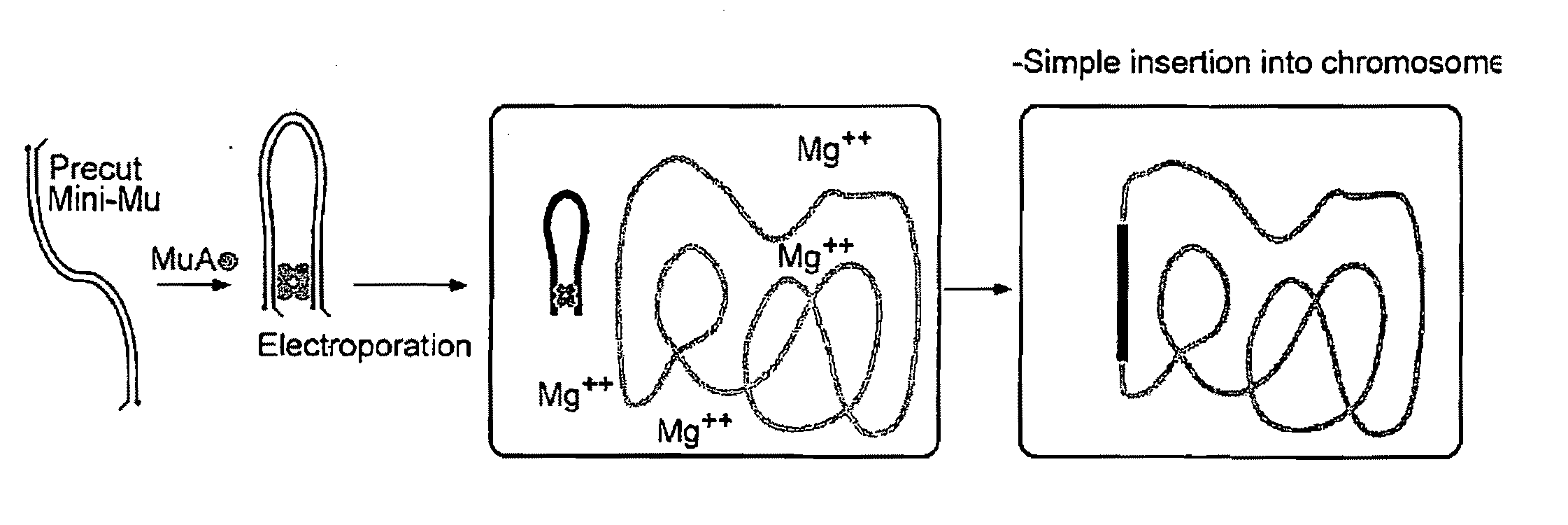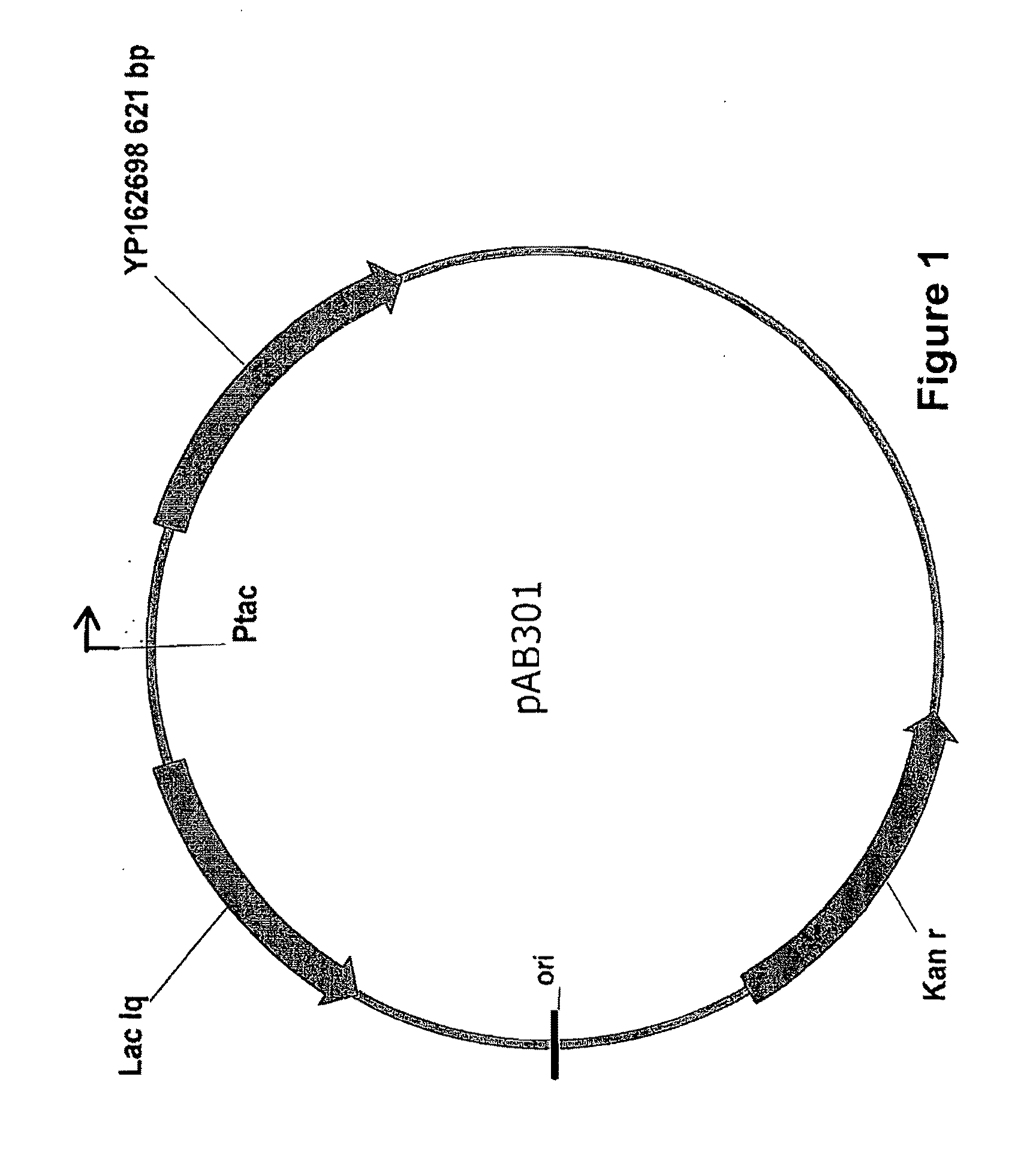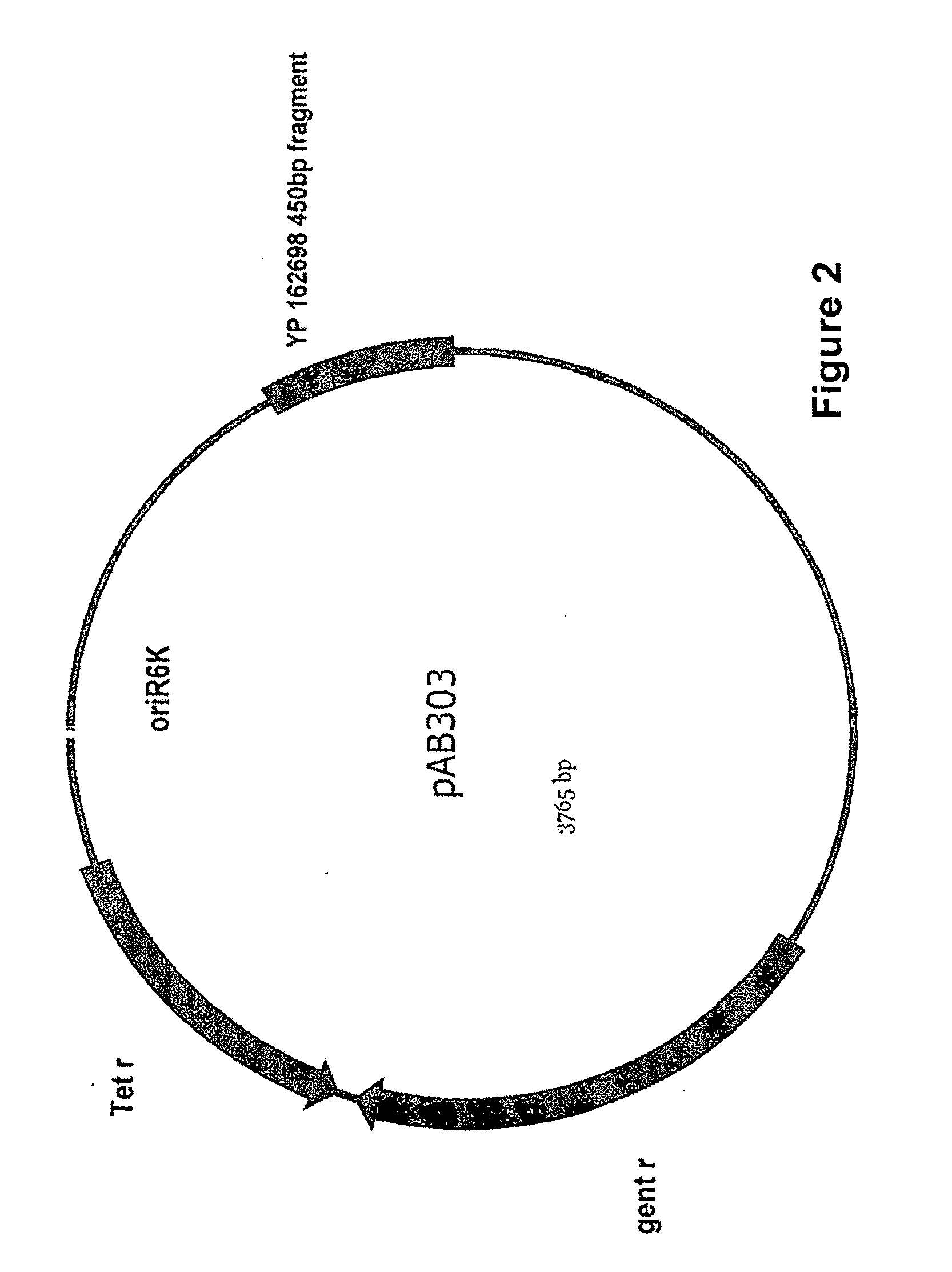Methods of Disrupting Quorum Sensing to Affect Microbial Population Cell Density
a quorum sensing and population cell technology, applied in the field of disrupting quorum sensing to affect the density of microbial population cells, can solve the problems of many microorganisms that are uncultivable, the attempts to modify i>z. mobilis/i> to enhance the commercial utility of ethanol production have met with limited success, and achieve the effect of increasing volumetric productivity
- Summary
- Abstract
- Description
- Claims
- Application Information
AI Technical Summary
Benefits of technology
Problems solved by technology
Method used
Image
Examples
experimental examples
[0226]The invention is further described in detail by reference to the following experimental examples. These examples are provided for purposes of illustration only, and are not intended to be limiting unless otherwise specified. Thus, the invention should in no way be construed as being limited to the following examples, but rather, should be construed to encompass any and all variations which become evident as a result of the teaching provided herein.
experimental example 1
Genetic Modification
Strategies for Ethanol Production
[0227]The maximal cell density achieved by growth of Zymomonas mobilis is affected by Type 1 quorum sensing, which utilizes AHL signal molecules. Heterologous expression in Z. mobilis of an AHL-degrading enzyme, such as the PvdQ from P. aeruginosa (nucleic acid sequence, SEQ ID NO:3, and amino acid sequence, SEQ ID NO:4) or AiiA from B. cereus (nucleic acid sequence, SEQ ID NO:5, and amino acid sequence, SEQ ID NO:6), can be used to create a derivative Z. mobilis strain that grows to higher cell density. However, any AHL-acylase or AHL-lactonase that alters or degrades AHL substrates could be used for the same purpose. A Z. mobilis strain that grows to higher density is commercially valuable, for example, for fermentative production of ethanol from sugar, because the volumetric productivity of the reactor increases in direct proportion to the cell density of the fermenting organism.
Identification of LuxR-Type Proteins in Z. Mobili...
experimental example 2
Exogenous Agents
Cloning and Expression of AHL-Degrading Enzymes in Z. Mobilis
[0246]Two AHL-degrading enzymes, representing each of the known enzymatic AHL-degrading mechanisms, are expressed in Z. mobilis to disrupt quorum sensing and allow the organism to grow to higher cell density. The enzymes chosen are the AiiA AHL-lactonase from B. cereus, and the PvdQ AHL-acylase from P. aeruginosa.
[0247]The broad-host range plasmid described above, pAB300, is used to express both enzymes. The genes encoding AiiA and PvdQ are cloned into pAB300 downstream of the tac promoter using standard molecular biology techniques, thereby creating plasmids pAB310 and pAB320, respectively. Clones are constructed in E. coli, and subsequently transferred into Z. mobilis by electroporation. Transformants are selected and isolated on rich medium (RM) agar plates containing 200 μg ml−1 kanamycin.
[0248]The effect of expressing each AHL-degrading enzyme is examined by measuring optical density at 600 nm of cul...
PUM
| Property | Measurement | Unit |
|---|---|---|
| Density | aaaaa | aaaaa |
Abstract
Description
Claims
Application Information
 Login to View More
Login to View More - R&D
- Intellectual Property
- Life Sciences
- Materials
- Tech Scout
- Unparalleled Data Quality
- Higher Quality Content
- 60% Fewer Hallucinations
Browse by: Latest US Patents, China's latest patents, Technical Efficacy Thesaurus, Application Domain, Technology Topic, Popular Technical Reports.
© 2025 PatSnap. All rights reserved.Legal|Privacy policy|Modern Slavery Act Transparency Statement|Sitemap|About US| Contact US: help@patsnap.com



